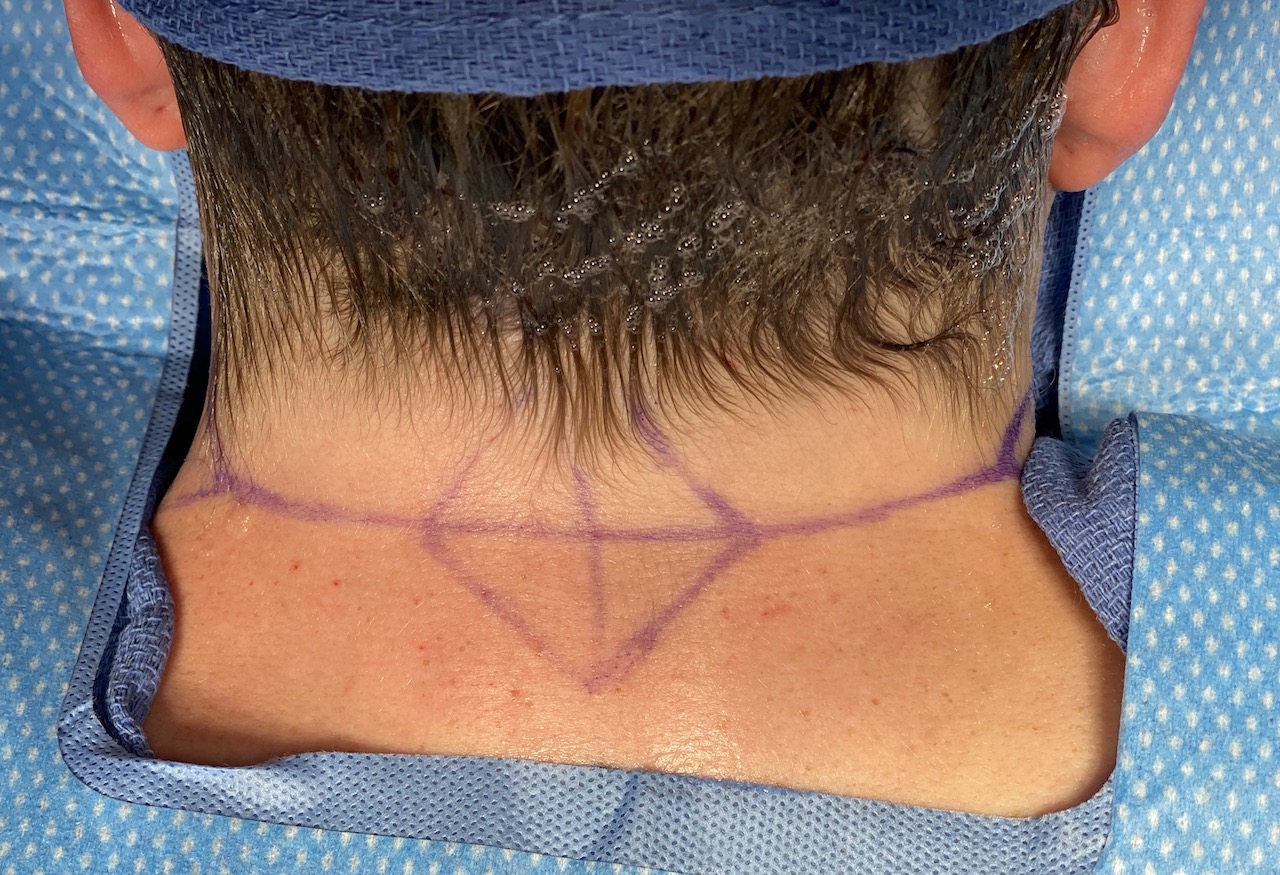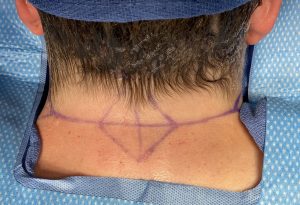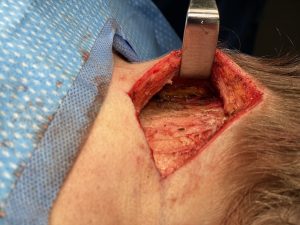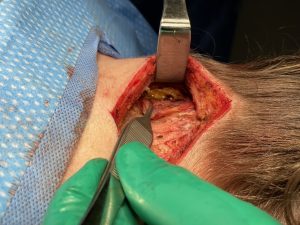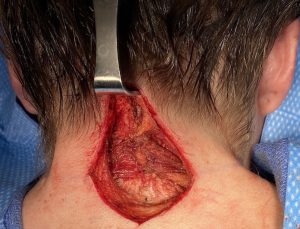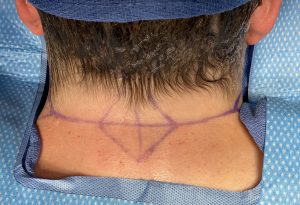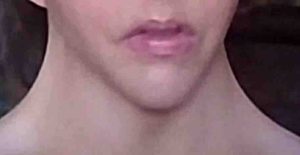Background: The webbed neck is a unique congenital deformity that is easily identified by its appearance. The neck skin webs are associated with widening of the trapezius muscle as well. It can be debated as to whether the neck webs represent an excess of tissue or normal tissue that is abnormally displaced to the side. My observation is that is an excess of skin and muscle tissue which must be factored into his the repair is done.
The classic technique for webbed neck correction is skin transposition flaps (e.g., z-plasties) along the outer lines of the webs. While effective it does create scarring that is noticeable and most patients do not usually see that as a good aesthetic tradeoff. For this reason I have always used a posterior approach where the scar line is in the midline of the posterior neck which for women hides it completely and it is single scar as opposed to bilateral lateral neck scars.
Posteriorly based webbed neck surgery takes an indirect approach to addressing the problem using a midline pull. Using a large skin excision, neck muscle fascial plication and weed muscle resection the neck webs are reduced albeit not completely eliminated. The immediate and short term results are usually quite good but there is always going be some partial relapse as the tissues relax a bit over time. Better long-term results should be able to be achieved if there was a better method to treat the wide muscle bands.
Case Study: This female had congenital neck webbing although she did not have Turner’s syndrome by genetic testing or having any other of its associated findings.
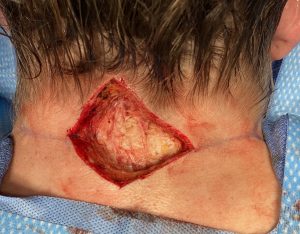
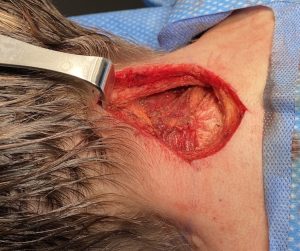
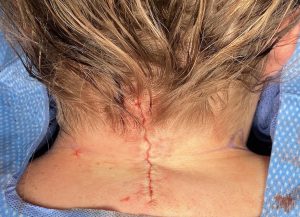

The traditional posterior approach to neck web surgery relies on a medial pull towards the midline from fascial plications and skin flap advancements/closures. It is effective but some partial relapse is seen in the first few months after the surgery. It is always better than before surgery but not as good as seen immediately after surgery. This trapezius muscle flap transposition technique may change that as muscle from the outer webs is moved inward as well. It is not just pulled but actually released and transposed. The superior release and inward movement allows the widest part of the web to be pulled inward.
Case Highlights:
1) The webbed neck is a finding seen in numerous congenital syndromes of which Turner’s is the most common. But it can also occurs in non-syndromic patients.
2) The posterior approach to webbed neck correction is the most acceptable to most patients who are understandably averse to scars along the side of their neck/webs.
3) The trapezius muscle flap technique is a new cmomponent of the posterior approach which I believe will have better and more sustained results in webbed neck corrections.
Dr. Barry Eppley
Indianapolis, Indiana

